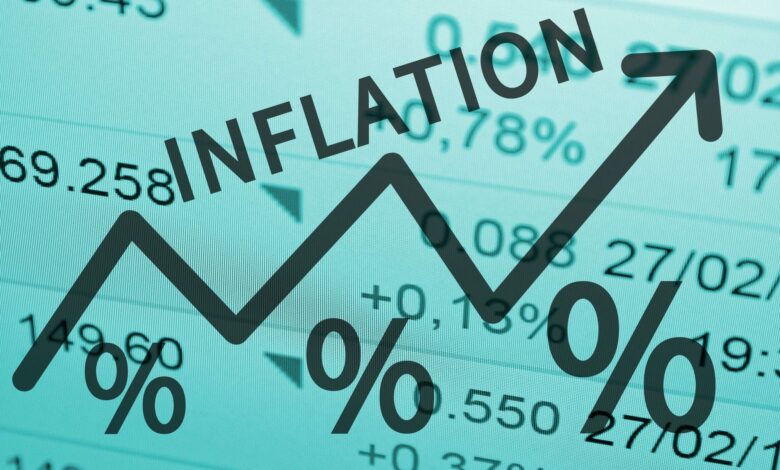Another disaster for the common man: Retail inflation and food inflation shoots up to 5.03% and 3.87% respectively

The world fought a global pandemic last year and more than anything, it made people realise the privilege they have over others. Those resourced often tend to foresee those who are struggling to make ends meet and while we are out here reading news about one billionaire surpassing another in wealth creation, we don’t realise what lower-income and middle-income groups suffer from, every day in this crashing Indian economy. Be it a pandemic or poor economic handling by the ruling government, the poor and the middle class remain the worst-hit sections of the economically crippling society. So, while the common man running a small or medium business in the country may not understand the complicated words of the budget, all they expect from their government is stability, jobs and less inflation. Looking at what is happening right now, it would be safe to say the government has been terribly failing at providing any of those things to the common man.
The last two to three weeks saw a substantial rise in the prices of petrol and diesel so much so that they reached triple digits in many parts of the country (For Example Rajasthan). With the internet being bombarded with memes and puns on the situation, it all felt like a temporary thing until the prices didn’t come down from a mind-numbing Rs 100 for more than a week’s time. An increase in the prices of petrol is an initial indication of the upcoming inflation in the economy owing to the increased raw material costs in production and ultimately, increased price of goods and services, among other things. This comes at a time when people are already facing difficulty with the hampered labour market. This means that even though inflation and unemployment move in opposite directions, especially because the increase in the price of products and services lead to a rise in the wages due to the wage-price setting, the chain breaks during the recession, one the country is facing right now. Simply put, due to more bargaining power currently in the hands of employers, wages are not expected to increase in response to the rising prices and thus, the entire burden of inflation would be put on the common man’s already affected livelihood.
What was then predicted is now a reality, with the recent government data showing a terrible increase in the retail inflation from the month of January to February, the numbers for retail inflation rising to about 5.03 per cent for the current month. The said parameter witnessed an about one per cent increase just in the last month, indicating the significant impact of risen petrol prices on the country’s retail prices as measured by the consumer price index (CPI). Further analysis of this data presented by the government on inflation for the current month, food inflation accelerated to about 3.87 per cent in February in contrast to January’s 1.89 per cent, as per the data released by the National Statistical Office (NSO). Note that the inflation being talked about here is in terms of real prices as measured by the consumer price index for the retail and food industry, directly implying that the livelihoods of common men who were already struggling because of the country’s high unemployment rate would be brutally impacted in terms of the demand of necessities. Oh, and the inflation in the fuel and light industry stay elevated at 3.53 per cent during the current month, keeping in line with the 3.87 per cent in January. My outlook? Wait for a deep impact on your wallet!
The inflation right now is more than what the central bank had predicted and much more than what the government had predicted while announcing the budget, especially considering that the inflation being referred to while making monetary policy decisions is mostly the retail inflation, which is at an alarming high right now. The Reserve Bank of India (RBI) has been asked to keep the consumer price index calculated inflation at 4 per cent, with a margin of 2 per cent on either side.
However, this macroeconomic complexity makes things more complicated than you may understand right now. It is because expecting the central bank to undertake contractionary monetary policy in an attempt to fight inflation would, in turn, lower the aggregate income level in the economy due to reduced investments, and thus would have an impact on the already hit aggregate demand or more specifically, the output, which is exactly what the country does not need right now on its path to economic recovery. Not only that, if the inflation persists for some time, real interest rates would see a negative trend implying hampered economic productivity in the long run. Feel like reading more about macroeconomics? Yes, me too.
Therefore, as can be predicted from the basic understanding of the model as mentioned above, we have no good news from the production side either, with Industrial production re-entering negative territory by contracting 1.6 per cent in January, mainly due to the decline in the output of capital goods, manufacturing and mining sectors, as reported by Press Trust of India (PTI). The output of the manufacturing sector, which constitutes about 77.6 per cent of the Index of Industrial Production (IIP), shrank by 2 per cent in the last month and is only expected to go downhill in the current month as well, keeping into consideration the trend. Wait, this is not even the worst part. Even though this information is no surprise, the number is rather disappointing- the capital goods sector recorded a contraction of 9.6 per cent during the month being reviewed. A contraction of 3.7 per cent was registered in the mining sector in January, against a positive growth of 4.4 per cent in the year-ago period. Meanwhile, the National Statistical Office (NSO), which releases the IIP data, has revised upwardly the IIP number for December 2020 from an earlier estimate of 1 per cent to 1.56 per cent. The factory out was in negative territory in November 2020. It had posted positive growth during September and October 2020. The IIP contracted by 12.2 during April-January as against an almost flat growth of 0.5 per cent seen in the same period last fiscal.
The consumer goods witnessed a slippage in year-on-year degrowth in 2021, which is a bad sign for the economy, to say the least. This statement roots from the fact that the CPI inflation in the month of February, last year, was recorded at 6.58 per cent. “We remain circumspect regarding the intensity of the rebound in consumption immediately after the vaccine rollout widens, as some categories of households may choose to rebuild the savings that they had drained during the lockdown and post-lockdown period,” said Aditi Nayar, Principal Economist at ICRA. Increased inflation is just another feather on the hat of the rippling economy, the direct impact of which would be seen on the common man. It is concerning because these numbers rolling in just the second month of 2021 pose a question mark on the rather optimistic view of the government presented budget and this inflation, if not dealt with urgently, would lead to some economically unwanted consequences, especially keeping into consideration the negative costs of inflation. What the economy has in store for the country is yet to be seen, but one thing we can be certain about is the fact that the common man would be the worst hit of the consequences.




